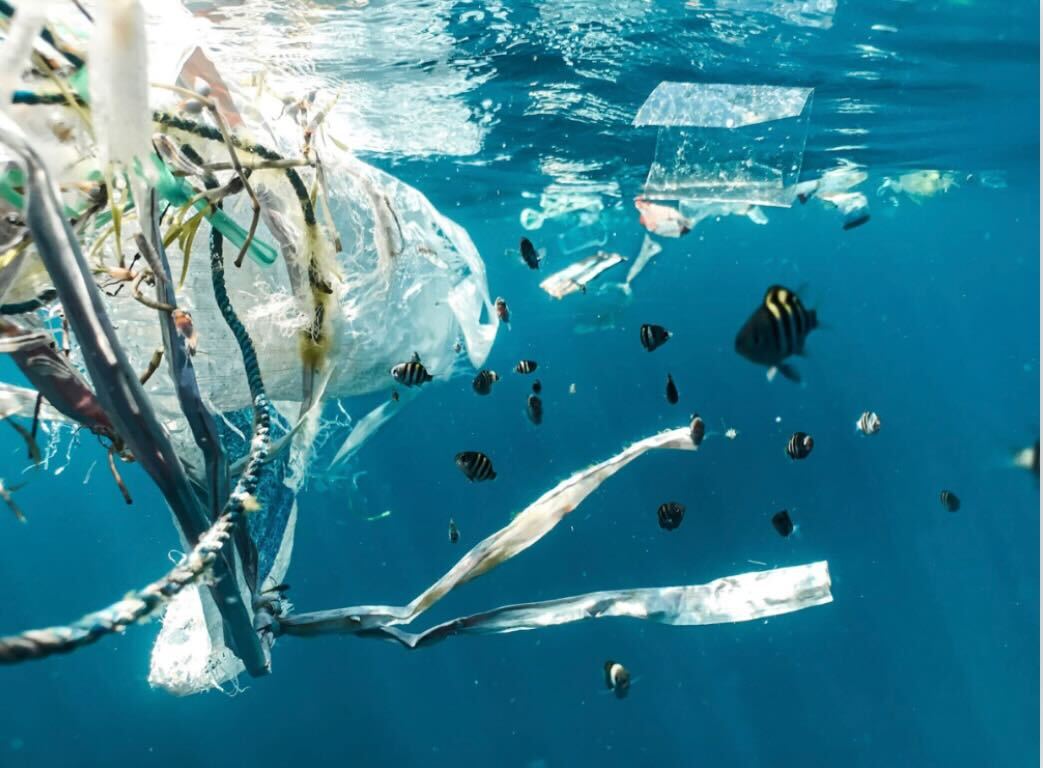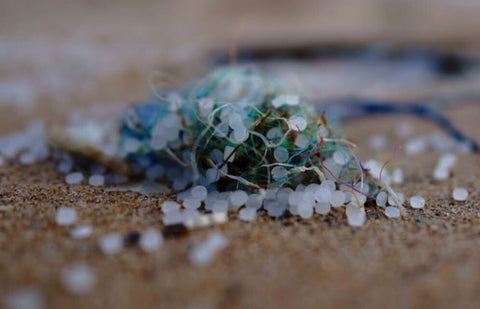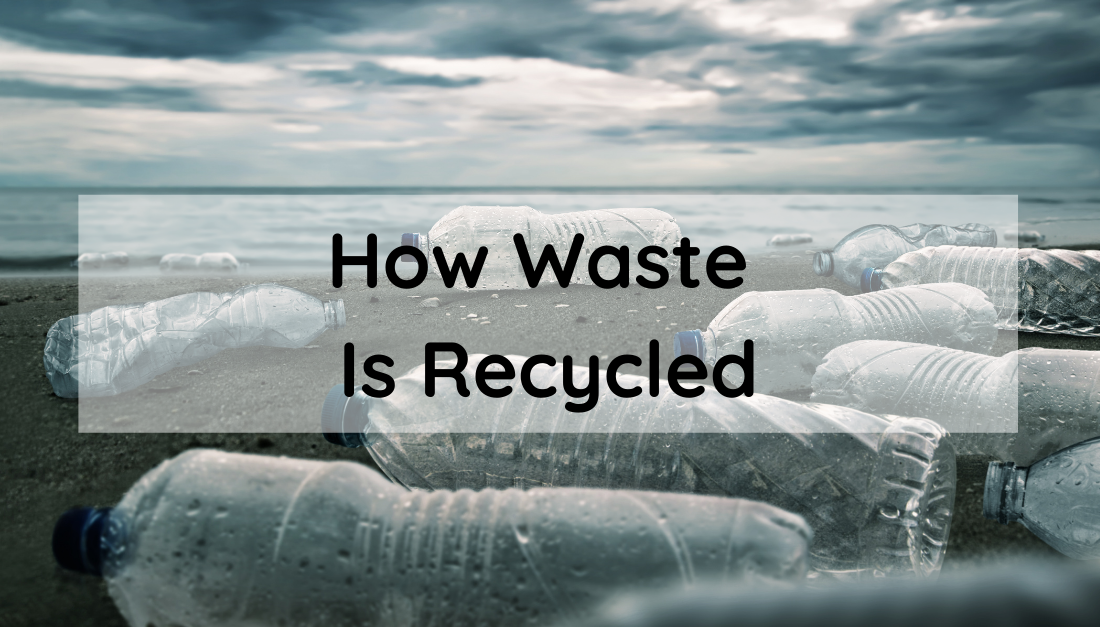
Microplastics - What Are They?
Microplastics are plastic debris smaller than five millimeters. This is equivalent to the size of an eraser on a pencil. These tiny plastic particles pose a serious threat to the environment since they are everywhere, especially on beaches and in the ocean. As with any other plastic, they do not easily break down and take hundreds to thousands of years to decompose. In order to fully be aware of the harmful impact of microplastic pollution to people and the planet, let’s take a deeper look into microplastics:

MICRO VS NANOPLASTICS
Plastic fragments can be classified as either microplastic or nanoplastic depending on their size. Microplastics are less than five millimeters in size while nanoplastics are smaller with a size equal to or less than 100 nanometers. Nanoplastics are so small that they are not visible to the naked eye or under a simple microscope. Due to this, nanoplastic particles are even more toxic than microplastics since they can be absorbed through the walls of digestive tracts in marine organisms.
TYPES OF MICROPLASTICS
There are two main types of microplastics which are primary and secondary.
PRIMARY MICROPLASTICS
Primary Microplastics are plastic particles that are created for commercial use. This is commonly found in face scrubs or exfoliates, toothpaste, and cosmetics. While it was a trend many years ago to try skin care with “exfoliating beads”, these microbeads are unfortunately a type of primary microplastic. Many countries are taking steps to prohibit the use of microbeads and some have already banned them. The US banned microbeads in the 2015 Microbead-free Water Act.
Other sources of primary microplastics include tires and synthetic textiles caused by abrasion. For example, a single load of laundry can shed between 700,000 and 12 million microfibres. Laundry is thought to be responsible for 35% of microplastics in oceans.

SECONDARY MICROPLASTICS
Secondary microplastics originate from the breakdown of larger plastic items such as water bottles, disposable bags, toothbrushes, or plastic bags. This breakdown happens because of exposure to environmental factors such as the sun’s radiation and ocean waves. This type of microplastic accounts for 69-81% of microplastics found in the oceans.

WHERE ARE MICROPLASTICS FOUND?
An estimate suggests that 70-80% of the total ocean microplastics are coming from land sources while only 20-30% are that of marine sources. These microplastics and other plastic waste that are land based can be a result of storms, water runoffs, or winds that carry the plastic into our oceans.
HOW ARE MICROPLASTICS IMPACTING THE WATER?
About 8 million pieces of plastic pollution are dumped into our oceans every day. All of that plastic eventually turns into microplastics. With that much plastic in the water, it greatly affects marine life since they will often end up consuming the microplastic pollution. It is found that microplastics can have a toxic effect on marine life which includes reducing food intake, delaying growth, and causing oxidative damage and abnormal behavior. A study shows that scientists tested 114 aquatic species and found microplastics in their organs.

ARE MICROPLASTICS HARMFUL TO US?
Not only do microplastics harm the environment, but they could harm our health. Microplastics are everywhere and they can even end up in the water we drink or the food we eat. So not only are animals ingesting plastic, but we are too. Once microplastics are ingested into the human body, they can begin accumulating polychlorinated biphenyls (PCBs) and other harmful chemicals that weaken the immune system, reproductive system and can cause more severe diseases such as cancer.
Professor Spector of genetic epidemiology at King’s College London, suspects that microplastics can have a negative impact on the gut microbiome as well. As the gut microbiome is linked to the immune system, we can conclude that microplastics do have a big impact on human health.
HOW MUCH MICROPLASTICS ARE WE REALLY INGESTING?
Studies show that we are consuming 5g of plastic every week from both bottled and tap water. That amount of plastic is equivalent to the size of a credit card. However, it is no surprise we are ingesting microplastics in huge quantities. Research published in 2019 calculated that the average American person drinks, eats, and breaths more than 74,000 microplastic particles per year. That’s a lot of plastic!

WHAT CAN WE DO TO PREVENT MICROPLASTICS?
Microplastics are a big problem and should be avoided to save the planet. Microplastics are everywhere and are not biodegradable. Here are a few ways to prevent microplastics from daily life:
- Instead of using water bottles, buy a charcoal water filter. Each water bottle may transfer hundreds of microplastics into your body. While a charcoal water filter will filter water without any plastic.
- Buy natural fabrics, like cotton, hemp, or bamboo. Apparel made from polyester and acrylic releases microplastics during washing. As it is non-decomposing, it ends up in the environment and remains there forever.
- Avoid using plastic products such as bags, packaging, and toothbrushes. All alternatives are available in the market. It’s easy to be eco conscious, try a bamboo toothbrush.
Just making small changes like these everyday can lead to big things.
IN CONCLUSION
Reducing your plastic usage is the first step in helping the planet. It's crucial to understand the environmental impact of every product we use. This is why we do extensive research on our ingredients such as polyvinyl alcohol to ensure that there are no microplastics in our products. We strive to offer the best earth-friendly alternatives for everyday necessities. Here at MamaP we make it simple to switch from plastic to natural.





1 comment
Thanks for sharing these insights. I’d no idea we’re ingesting a crazy amount of microplastics each year. Here’s hoping for a plastic free future.
Mandeep
Leave a comment
This site is protected by hCaptcha and the hCaptcha Privacy Policy and Terms of Service apply.